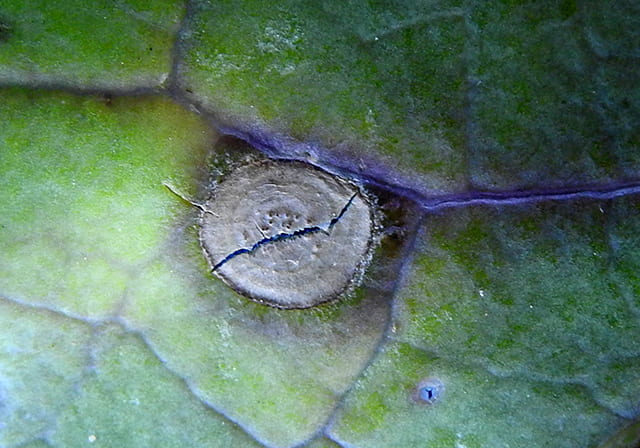Images below of an affected kale leaf were taken June 2019. This was the first confirmed case on Long Island in at least 30 years. Leaf spots could be confused for Alternaria leaf spot, thus it may have occurred before. Spots are round, their center is a lighter (gray) color often with a darker, brown border, and they lack the target appearance that can occur with Alternaria leaf spot. Diagnostic is the very tiny round black structures that form in the center of these spots. (They can be hard to see without a magnifying lens.) These contain the pathogen’s spores which are dispersed by splashing water. Alternaria’s spores make those leaf spots appear dark and velvety, especially when humid. The black leg pathogen also causes seedling damping off and basal stem canker, and can grow down into roots.
Black leg is considered an important disease. Leaves with possible symptoms should be brought to a diagnostic laboratory (Long Island Horticultural Research & Extension Center (LIHREC) on Long Island) for confirmation. It has been uncommon in the region because it is rarely seed-borne anymore reflecting preventive actions of the seed industry (for example, Washington State Department of Agriculture has a Crucifer Quarantine ruling). The pathogen can survive in soil. 4-year rotation out of cruciferous crops is recommended. Cabrio is the only labeled fungicide for all crucifers.





